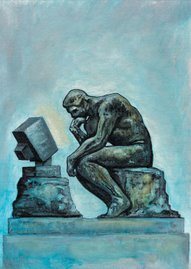Recognizing Arguments – Not all passages contain arguments. One aim of logic is to distinguish passages that contain arguments from those that do not. In general, a passage contains an argument if it claims to prove something. If it does not do so then it does not contain an argument. Two conditions must be fulfilled for a passage to claim to prove something.
1.) At least one of the statements in the passage must present evidence or reasons for something.
2.)There must be a claim that the evidence or reasons supports something.
Because objects of art are expressive, they are a language.
The proposition Objects of art are expressive is asserted as evidence or reason (premise), and the proposition They are a language is claimed as supported (conclusion) by the evidence of the reason.
Although every passage expressing an argument contains several propositions asserted in it, not every passage in which several propositions are asserted need contain an argument. For an argument to be present, one of the asserted propositions must be claimed to follow from other propositions asserted to be true, which are presented as grounds of, or reasons for believing, the conclusion. This claim may be either explicit or implicit. It may be made explicit by the use of premise indicators or conclusion indicators or by the occurrence of such words as must, should, ought, or necessarily in the conclusion. But the presence of these argument indicators is not always decisive.
Since Henry graduated from medical school, his income is probably very high.
Since Henry graduated from medical school, there have been many changes in medical techniques.
The first argument is an argument but the second is not although both make use of the premise indicator since. The basic structure of the argument can be illustrated thus:
Q because P
If we are interested in establishing the truth of Q, and P is offered as evidence for it, the Q because P formulates an argument. However, if we regard the truth of Q as being unproblematic, as being at least well established as the truth of p, but are interested in explaining why Q is the case, the Q because P is not an argument but an explanation.

Nuk ka komente:
Posto një koment